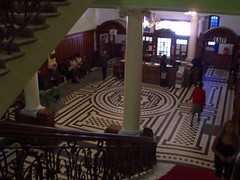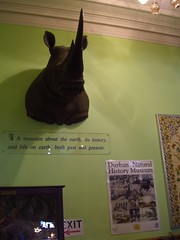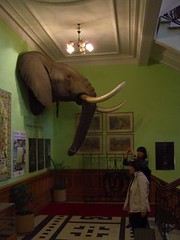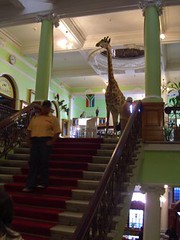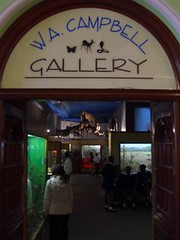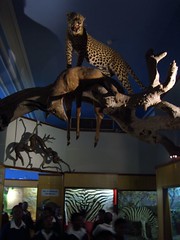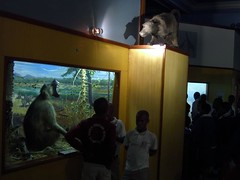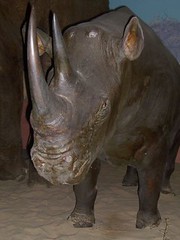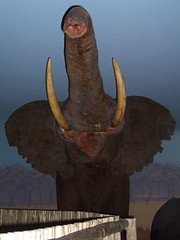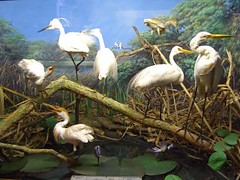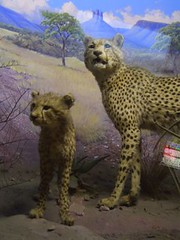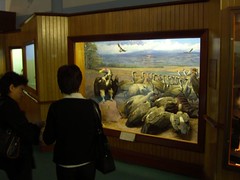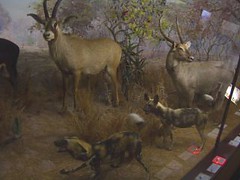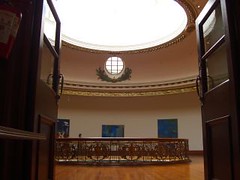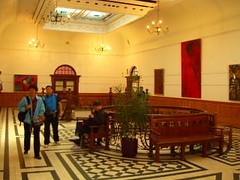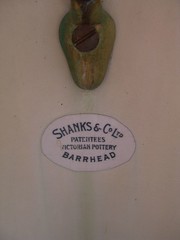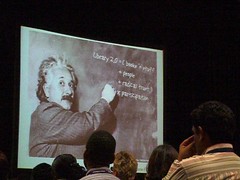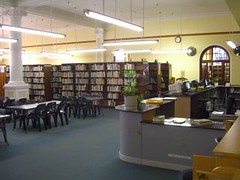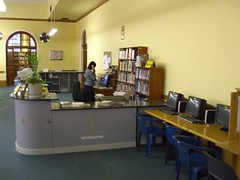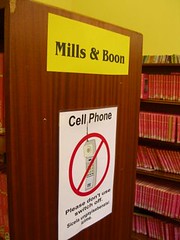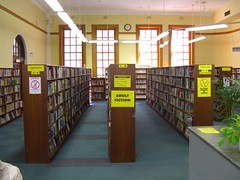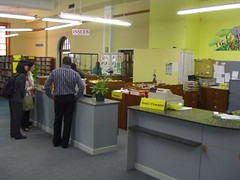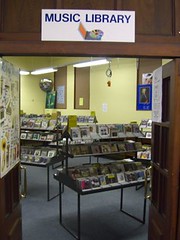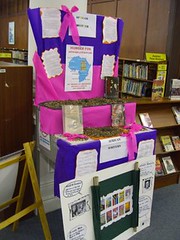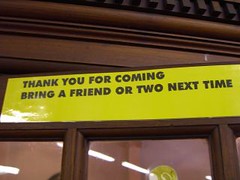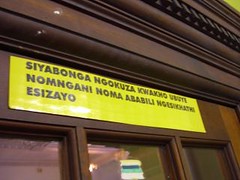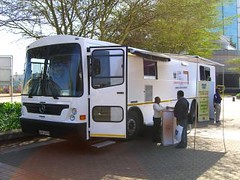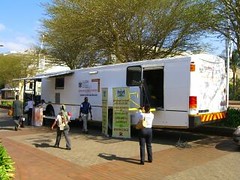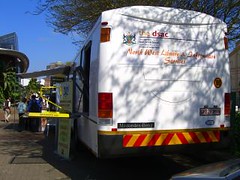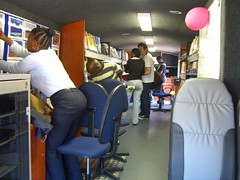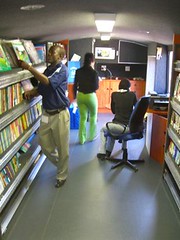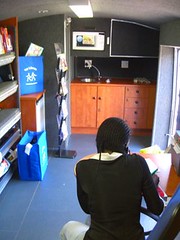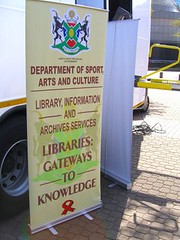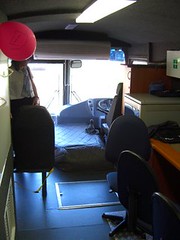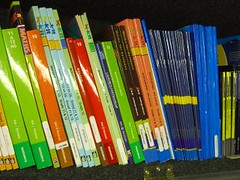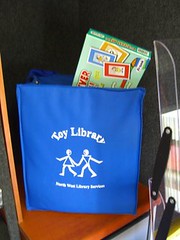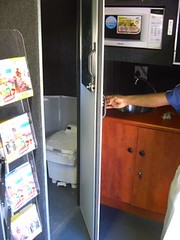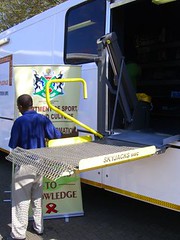I interrupt my series of IFLA posts (yeah, a few more to go) with this one on the custom of burning "Hell Bank Notes", otherwise known as Joss Paper.

Hell dollars - Originally uploaded by Mussels
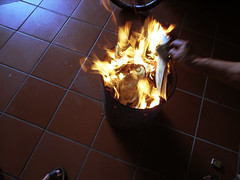
To Hell (域) - Originally uploaded by ampulets2

Offerings to Ancestors Dec 2006 - Originally uploaded by jasonwmw
My family doesn't practice this custom. Maybe only one time, at my maternal grandpa's funeral, but not for my paternal grandma's. Nevertheless, the practice comes to me. Or, I'm affected by the effects of the burning.
I live in a HDB estate and many of my Chinese neighbours burn joss sticks and joss paper as part of ancestor worship -- particularly during the Hungry Ghost Festival. Some of the burnings can get pretty elaborate, with paper constructs of mansions, cars, luxury goods like mobile phones, even effigies of maids and servants -- all burnt as offerings to ensure the ancestors or spirits would enjoy a life of ease in the afterlife.
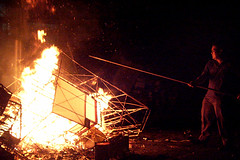
Hungry Ghost Festival I - Originally uploaded by Juin Hoo
The smoke gets to me. There's an acrid chemical odor to the fumes. Surely, breathing that into your body cannot be good.
And then there's the scattered ashes and blackened spots on bare concrete walkways -- remnants by those who don't use containers to burn their offerings (provided by the town council) like this one:

For The Skies Only - Originally uploaded by Jelly of Eld
There are hidden clean-up costs. Ultimately, it's tax money from you and me.
Without fail, I'd have to shut the windows when the burning starts. But the acrid smell of burnt paper still manages to seep in. Sooty ashes litter the void deck. Gets into my apartment sometimes.
It pains me to see people not giving a hoot about the cleanliness of my (and their) surroundings.
On the bright side, more and more civic-minded neighbours are using the containers. But understandably, they cannot control how the smoke and ashes would drift.
Still, there are those who persist in damaging the concrete pavement (yes, I've seen pitted and cracked concrete floors). The town council puts out posters urging the use of the containers, but to no avail.
Now I'm NOT suggesting in anyway that the custom of burning joss paper be stopped.
In truth, when I was younger, I was inclined to think that the practice of burning joss paper was outdated. But maybe having been exposed to heritage enthusiasts in later years, I now take a moderated stand. People should be free to practice whatever customs within acceptable social norms. There are also people who participate in the custom because it's a family thing (btw, nice post on explaining the burning procedure).
I'm not for burning. I won't do it. That doesn't mean others should not.
What I take issue is the resultant pollution and litter, from the collective burnings from many households. I wish there was a way to reduce the negative effects.
Calling for the practice to be stopped would be a recipe for disaster, politically and socially.
So what we need is a way to continue the practice, without resulting in the smoke, soot and litter. Or at least make incremental progress to reduce the negative effects.
I was thinking of a multi-pronged approach:
- Public education on the relevance and importance in maintaining customs. And clarify that the issue isn't about the custom per se, but the pollution. Something that heritage enthusiasts and agencies can work hand-in hand, I think.
- Create incentives for students to design a better bin, to capture the smoke and debris. Or filter the smoke.
- Victor Yue (over at the Singapore Heritage list) mentioned about the concept of smoke being the transportation medium, which may lead to resistance in adopting smoke filters for burning. Still, I'm hopeful that modern practitioners can accept the idea of a "Hell Note Super Highway", i.e. burn in a collective location. After all, if they can introduce modern items like cars and handphones to burn to the dead, why not a collective smoke superhighway?
- In the same discussion, Victor mentioned about possible health hazards from the burning of the cheap materials used in the joss sticks and papers. That might be a possible angle to make people more receptive to items 2 & 3. I'm confident most will consider the health-risk to others. They want to accumulate good karma, not incur bad ones.
- Engage the public on the issue. Start with open discussions. Spill to the papers and talk shows. Hopefully a solution from the public as well.
Would the above work?
I don't know.
But at least I got the matter off my chest. I've always wanted to speak my mind about this issue but wasn't sure how to approach it. Thanks to the postings over at the Singapore Heritage list, it has clarified some of my thoughts. I've decided to blog it here.
I realise that talking about the practice of burning hell notes and joss sticks is probably as sensitive as talking about say, Muslim prayers that are sometimes held at void decks or homes, or Indian weddings etc. Issues that touch on the faiths and traditions of another individual is always a sensitive matter.
Perhaps the reluctance to speaking pointedly about them stems from worries that it would be (mis)construed as being racist or intolerant. This reluctance can get to the point where no one talks about it openly. And the problem gets worse.
Race, religion, beliefs... that's not the issue here.
The issue is about striking a balance between preserving traditions and consideration for others who don't subscribe to those traditions.

